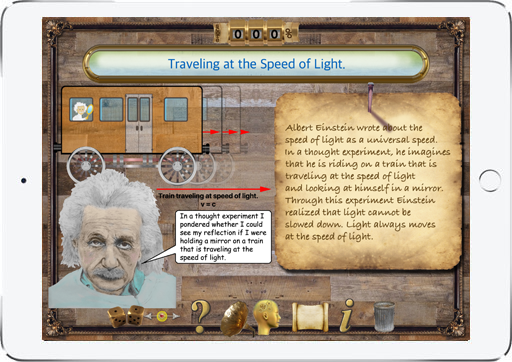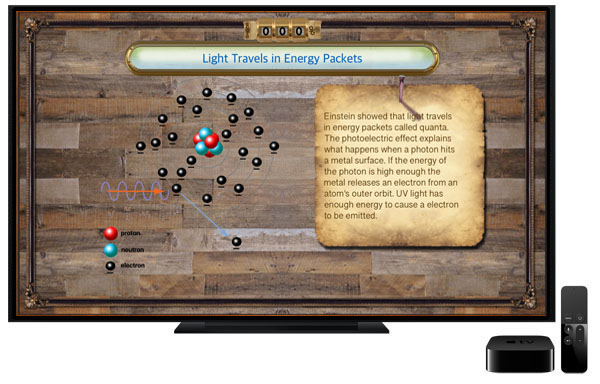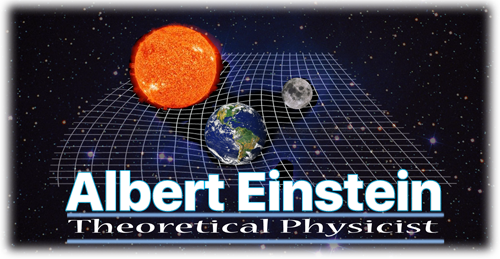
Check out our new Augmented Reality Apps!
Check out our Giants of Math and Science Series: Ada Lovelace • The First Coder |
With this app students learn about the life and contributions to physics made by Albert Einstein. It discusses his major scientific theories including the application of Einstein's ideas to the understanding of nuclear fission, special and general relativity, and quantum mechanics. Albert Einstein is considered to be the greatest physicist of the Twentieth Century. His family moved from Ulm, Germany to Munich right after he was born. As a young boy of just five years old, Albert Einstein became very ill. He was forced to stay in bed. To stimulated him intellectually his father gave him a compass. Young Albert was fascinated by this amazing device. What strange force caused it to move? Early in his life Albert Einstein wanted to teach math and science. He earned a diploma from the Swiss Polytechnic academy in 1900. His report card stated that he excelled in algebra, geometry and physics. It was not easy for Albert Einstein to find work as a teacher. Eventually he ended up working at the Swiss Patent Office. 1905 was an amazing year for Einstein. He published his Special Theory of Relativity. In this theory, Einstein explains that mass and energy are related. According to Einstein the relationship between mass and energy can be summarized in a simple equation: E = mc². Using this app students learn about his amazing life. It includes introductory information about physics. We hope that this app will inspire students to pursue careers in science. Students will enjoy using this graphically illustrated, interactive learning tool. The timeline feature presents key events in the development of our modern understanding of atomic energy. Tapping on timeline points brings up descriptions of historically significant events and the role that Albert Einstein played. A quiz function helps students demonstrate their comprehension of the reading material. Key science concepts are shown in colorful illustrations. We hope this app will inspire students to study physics. The app shows that Albert Einstein certainly deserves the place he has earned in the history of science.
|
Special features make using Portrait of a Genius, Albert Einstein • Theoretical Physicist fun: 1. Tap buttons to learn about the major events in his life. 2. interesting facts are presented using colorful charts. 3. Tap the quiz or game buttons to practice what you've learned. 4. Read about some of the significant events in the history of theoretical physics 5. Sound effects make the interaction even more fun. 6. Available for Macintosh, iPad and Apple TV devices. |
 |
Available now for Apple TV and Macintosh Bring the excitement of exploring the breakthroughs in theoretical physics and contributions made by Albert Einstein to your classroom, computer lab or living room with the Apple TV version of the Albert Einstein • Theoretical Physicist app.
|
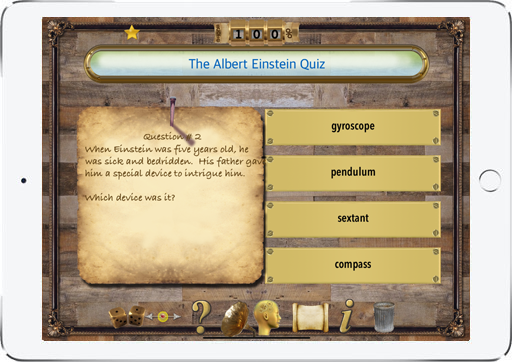 |
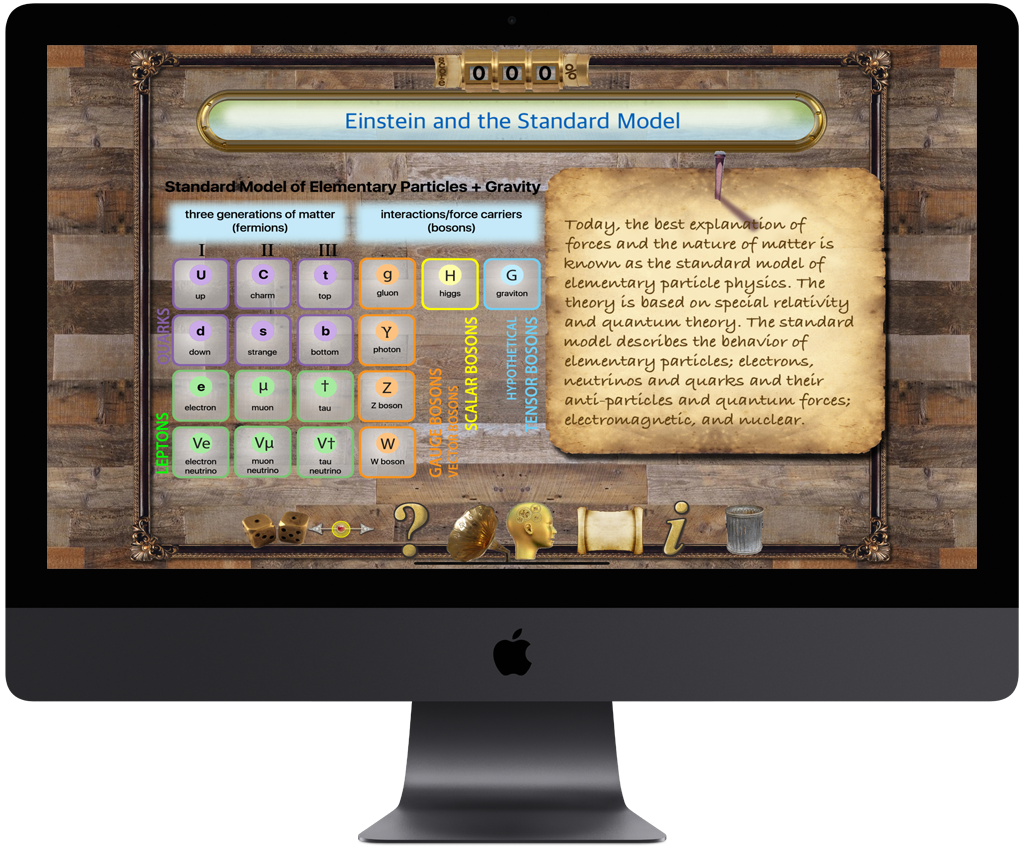 |
$1.99 |
